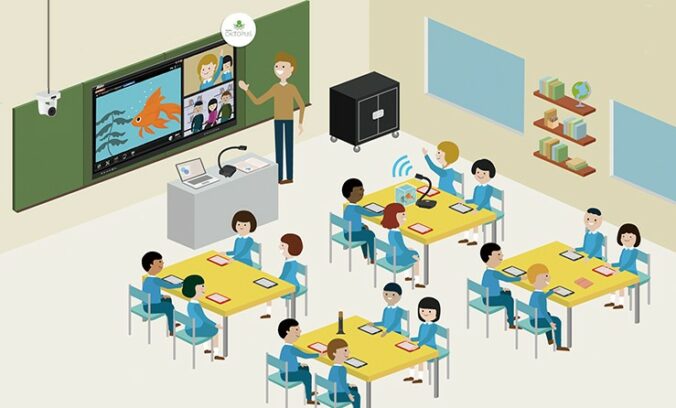This week’s digital device topic was interesting and relevant. The use of and access to technology in the classroom has been quite the topic of discussion for the past few years and especially now. I do believe there are many ways to use technology in the classroom that support student learning. There is a wide variety of educational supports and games that are accessible on the internet for teachers and students to use. Technology based activities can be more engaging for some students which can help class participation, engagement, and motivation. We can look at our in-class activity with the Arduino Science Journal. This platform/app gives students and teachers access to many different science experiments that can be tracked and done using devices. For me personally the app did not want to work properly on my device, therefore I am reflecting on the experiment listed on the website without using the app. I looked at the experiment on luminance which can be done k-12. I did enjoy this experiment, and I like how versatile the age range is, making it useful for all age groups. The experiment requires you to have access to a cellphone with the app for the experiment. I did not have access to a cellphone with the app and I question using this experiment in primary grades if it requires a cellphone. I think it would be interesting to use the experiment as a base line and see how it can be done with objects in the classroom rather than a cellphone. I think having the ability to pivot is helpful since not every school has access to the same technology.
As someone who wants to teach grade 2, I have been considering how digtial devices are helpful in the grade I hope to teach. I do think there is a place for devices in the classroom. That said, there are some considerations. The use of technology looks vastly different at different grade levels. There is also the addition of the cellphone ban in schools. Normally in primary grades students do not have cellphones in school anyway. I think in primary ages there is more of a focus on teaching and learning that is not technology based (hands on, social emotional, etc.). Screentime considerations are also important, students in grade 2 truly do not need to be on screens for more than 2 hours maximum. That said, videos, images and games are a wonderful way to introduce students to topics. Digital timers, brain/movement break videos and educational games are a terrific way to get your students to use technology appropriately. Using technology students have access to so much information that may or may not be appropriate. Kids are extremely curious so making sure they are on track using devices is important. Monitoring and giving access to school devices may help mitigate this. It is also important to make device expectations clear because not only is content important but device care as well.
Where I found screen time guideline
Here is a game called keyboard jump which can help students with spelling and typing
